Spaghetti Amatriciana: the Recipe for Rome’s Main Course with Guanciale and Tomatoes

Spaghetti all'amatriciana is a typical main course of Lazio cuisine, known and loved far beyond regional borders. It is a symbolic recipe of the city of Rome, but originally from Amatrice, from which, in fact, it takes its name. It is said that it was the main meal of the shepherds of the Rieti municipality: originally it was without tomato, imported only later from the Americas, and took the name of gricia. Over time it became a true cornerstone of Italy's Capital tradition, like carbonara and cacio e pepe, and is today included by the European Union amongst the Guaranteed Traditional Specialties (TSG).
There are numerous variations of this ancient and very popular recipe, but the one we propose to you is the original recipe. For an impeccable result, it is essential that the ingredients are of excellent quality: Amatrice's guanciale, which must be a quarter of the weight of the pasta -, a good Roman Pecorino cheese, fresh or peeled tomatoes and chili. Furthermore, the sauce must not be too abundant, but just enough to form a creamy condiment together with the cheese.
Tasty and with an enveloping consistency, spaghetti all'amatriciana is the right idea for any occasion: from Sunday lunch with the family to dinner with your closest friends, they always win over adults and children alike.
Tips and Advice for Spaghetti Amatriciana
– While it may be difficult to find the original ingredients in the US, you can go with alternatives that are as close as possible to the original ones.
– You won't need a lot of olive oil, since guanciale is a really fatty type of cold cut and will melt on the pan, greasing it itself. You'll only need the oil to sauté the chili pepper.
– The best wine to serve with this pasta is a full-bodied red wine, like Sangiovese or Montepulciano, to help accentuate all the flavors of the sauce. You can also pair it with a rosé wine.
– You can also use pancetta or bacon instead of guanciale, although the taste will be a little less rich and robust.
– You can make this dish vegetarian or vegan by swapping the guanciale for a vegan option.
– You better use a really large pan, to accomodate all the pasta and the sauce, without risking to overflow the ingredients while mixing them together.
How to Store Spaghetti Amatriciana
We recommend preparing spaghetti amatriciana and enjoying them hot at the moment. You can, however, freeze the sauce and then reheat it when you need it, before adding the cooked pasta to it.
Find out how to make it perfectly by following the step-by-step procedure and advice.
Ingredients
How to Prepare Spaghetti Amatriciana
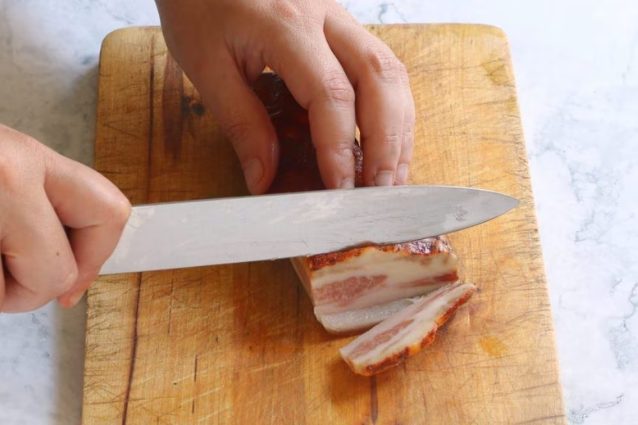;Resize,width=712;)
Slice the guangiale in not too thin slices. Then make sticks out of them.
Slice the guangiale in not too thin slices. Then make sticks out of them.
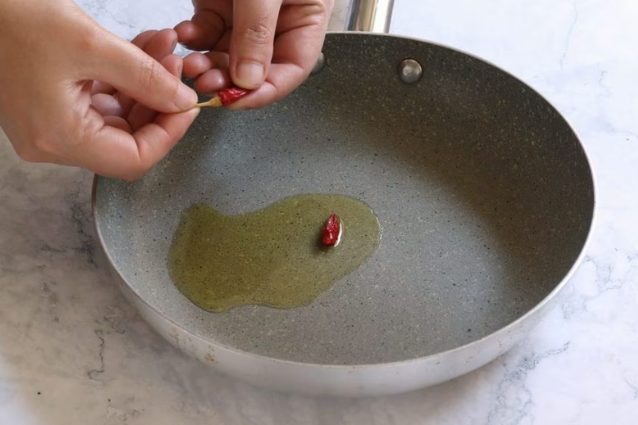;Resize,width=712;)
In a large pan, fry the chili pepper with a drizzle of oil.
In a large pan, fry the chili pepper with a drizzle of oil.
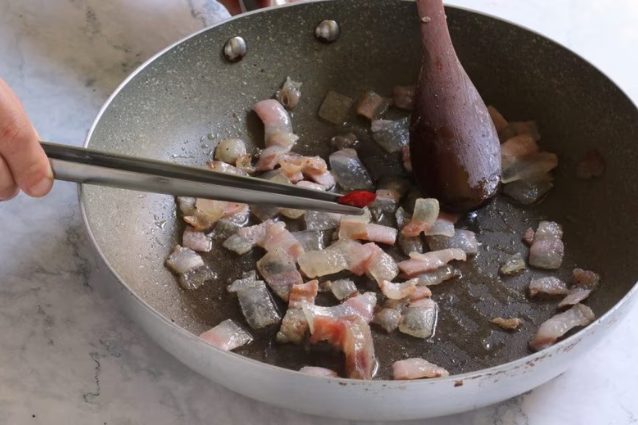;Resize,width=712;)
Add the guanciale and let it brown, stirring it with a wooden spoon. Then, remove the chili.
Add the guanciale and let it brown, stirring it with a wooden spoon. Then, remove the chili.
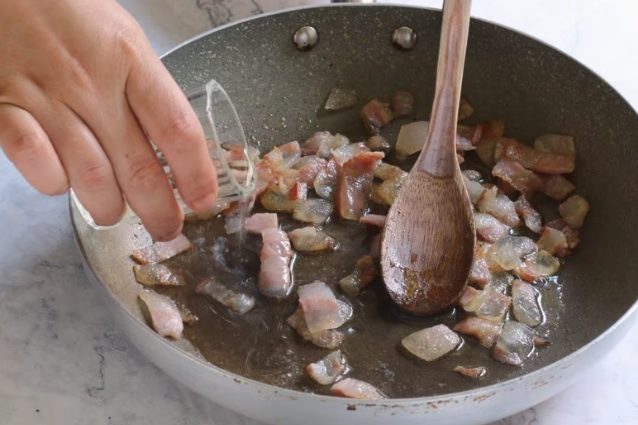;Resize,width=712;)
Pour in the wine and let the alcohol evaporate.
Pour in the wine and let the alcohol evaporate.
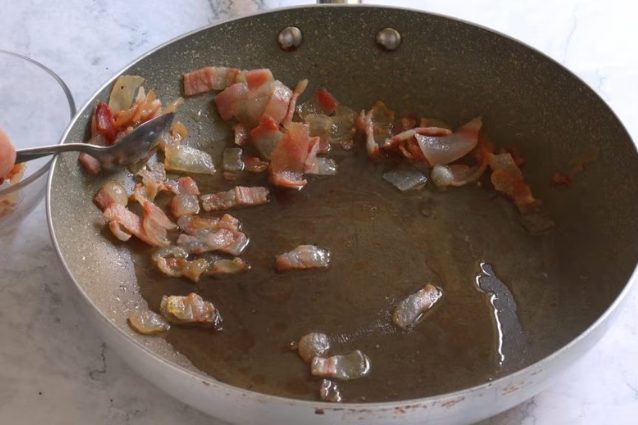;Resize,width=712;)
Collect the guanciale, draining it with a spoon, and keep it aside and warm.
Collect the guanciale, draining it with a spoon, and keep it aside and warm.
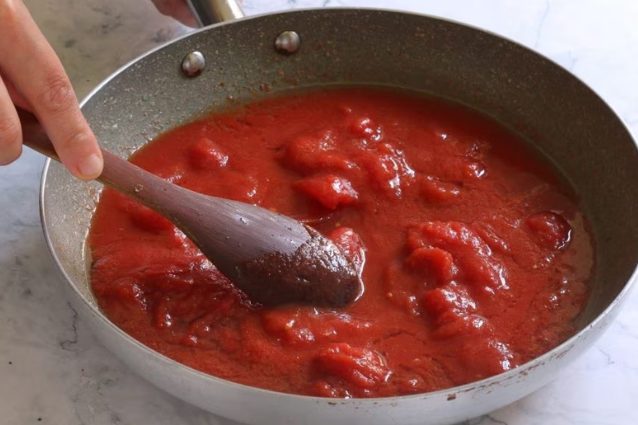;Resize,width=712;)
Pour the peeled tomatoes into the pan, add salt and leave to cook for about ten minutes.
Pour the peeled tomatoes into the pan, add salt and leave to cook for about ten minutes.
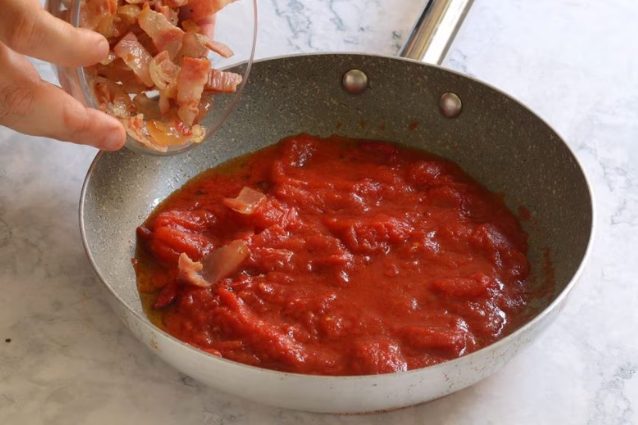;Resize,width=712;)
At this point add the bacon to the sauce and let it flavor.
At this point add the bacon to the sauce and let it flavor.
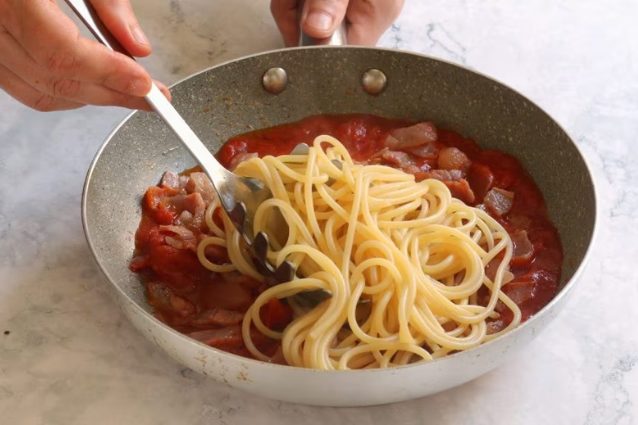;Resize,width=712;)
Cook the spaghetti in boiling, salted water for the cooking time indicated on the package. Drain them al dente and transfer them to the pan with the heat off.
Cook the spaghetti in boiling, salted water for the cooking time indicated on the package. Drain them al dente and transfer them to the pan with the heat off.
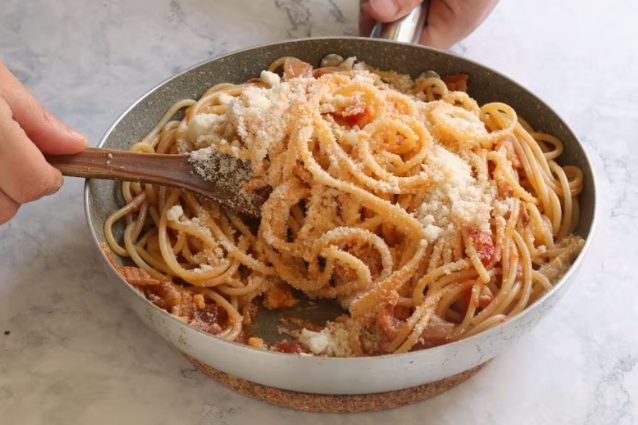;Resize,width=712;)
Stir in the grated Pecorino cheese.
Stir in the grated Pecorino cheese.
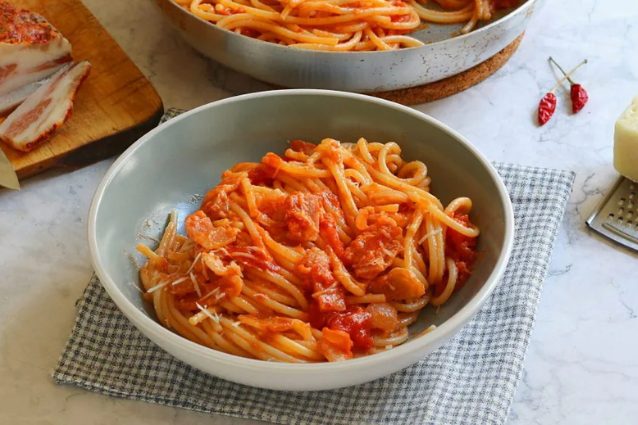;Resize,width=712;)
Serve the spaghetti amatriciana immediately, completing the dish, if you prefer, with another sprinkling of fresh Pecorino cheese.
Serve the spaghetti amatriciana immediately, completing the dish, if you prefer, with another sprinkling of fresh Pecorino cheese.
;Resize,width=767;)
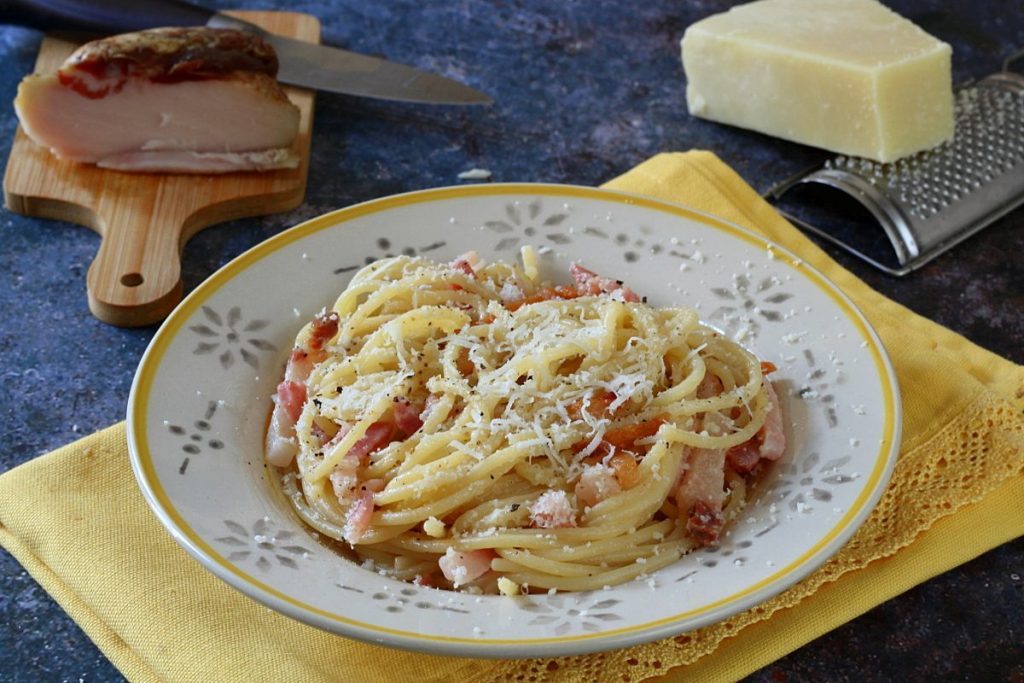;Resize,width=712;)

;Resize,width=712;)
